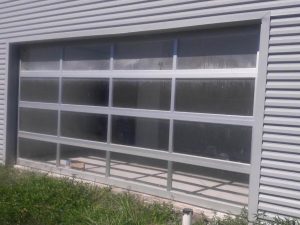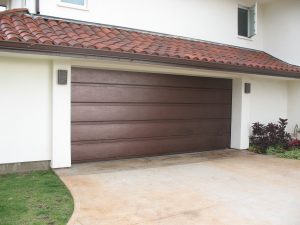There’s an abundance of traditional garage door designs on the market today, and there’s a reason for that – maybe two. For starters, most homes in the USA are traditional. Then, the traditional home style is a mix of many styles that prevailed through history.
If you have a traditional home and planning a garage door installation, you likely wonder about the elements that will make a great match. And this is what we are about to explore.
To find a traditional garage door, you need to understand the term traditional
Traditional garage doors may be anything from Craftsman to rustic. And we’ll tell you why. The traditional architectural style isn’t stuck in one particular period of time. What is a typical traditional home style? A Craftsman home. A Tudor style. Colonial, Victorian, and Mediterranean architectural styles. Today, a traditional home combines the styles of many architectural designs over time. And although there are differences between architectures at each period, today the elements of the most prevailing home styles dominate, bringing an amalgamation of the most defined characteristics historically. And so, nowadays, traditional homes are defined by strict and simple lines. Also, plain rooflines, symmetry, modest hardware, brick and stone exteriors.
 In a traditional home, everything matches. Nothing stands out. A strong sense of uniformity, serenity, and symmetry creates a classic beauty. It makes sense to say that the garage door should be a perfect match. Anything else, like a modern glass garage door, will only feel out of place. Should we see the traits, which make a garage door traditional?
In a traditional home, everything matches. Nothing stands out. A strong sense of uniformity, serenity, and symmetry creates a classic beauty. It makes sense to say that the garage door should be a perfect match. Anything else, like a modern glass garage door, will only feel out of place. Should we see the traits, which make a garage door traditional?
Garage door materials
One would associate the traditional style with wood garage doors. This makes perfect sense. That’s because traditionally, garage doors were made of wood. Of course, your choices are not limited to wood. Vinyl and steel garage doors also fall into the category of traditional. Of course, this has to do with the style of the panel. In other words, the traditional garage door style is defined by the panel style.
Garage door panel styles
 Unlike contemporary garage doors, whose elements are quite striking or the contrary, flat – like flush garage doors, the traditional ones bring beauty without screaming for attention. Traditional garage door panels are often raised or recessed. A classic example would also be the carriage house garage doors. Ranch-style homes would look good with farmhouse panels, which are distinctive for their trims.
Unlike contemporary garage doors, whose elements are quite striking or the contrary, flat – like flush garage doors, the traditional ones bring beauty without screaming for attention. Traditional garage door panels are often raised or recessed. A classic example would also be the carriage house garage doors. Ranch-style homes would look good with farmhouse panels, which are distinctive for their trims.
Raised panel garage doors may have long or short paneled designs. These may be short or long panel beadboard garage door designs.
Speaking of the panel, its color matters too. As a matter of fact, the color of the garage door stands out. And so, it must match the rest of the home. Even if it’s contrasting, it’s not intense and bright. The colors are neutral – brown, black, white, beige, cream.
Garage door windows
Since symmetry is a main characteristic of the traditional architectural style, the garage door windows – an almost must-have element, are symmetrical. Their configuration provides a strong sense of uniformity. This is true even if the garage door panel is arched. In contrast to many modern garage doors, traditional ones have windows at the top side of the panel. The windows are placed horizontally in a symmetrical way & are of the same size.
Garage door hardware
One thing common to most traditional and contemporary garage doors is the lack of ornaments. All the same, most traditional garage doors have plenty of trims, like crossing beams, handles, hinges but their design is subtle.
It’s actually the sum of neutral colors, conventional materials, and subtle designs that constitute the traditional style. Now, if your home is a true reflection of a Tudor or Craftsman style, you may want to turn in this direction. That’s to get a matching garage door style. A classic representation of a Tudor garage door would have timber elements and dark wooden elements, whether real or faux. Craftsman garage doors are more versatile with recessed or raised panels. So, start with your home’s style and take it from there.







